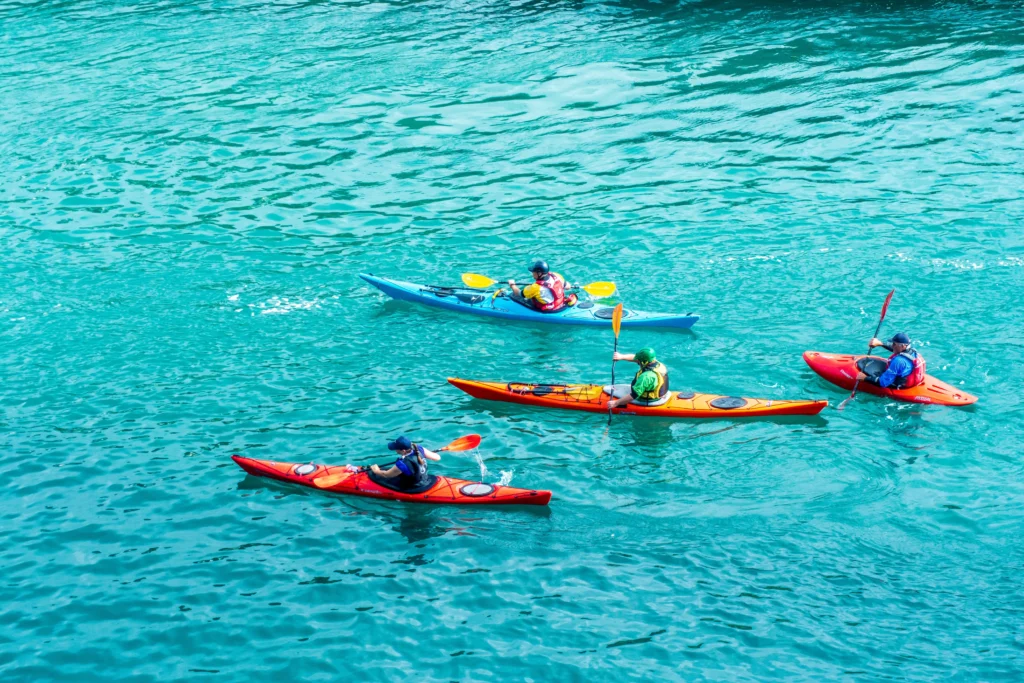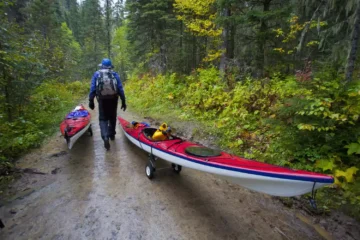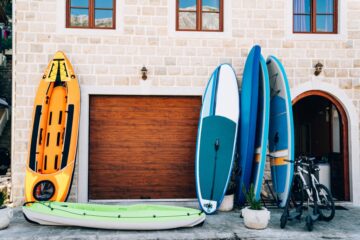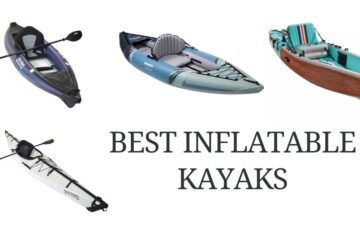Choosing the right size kayak is crucial for your comfort and safety. It depends on several factors. These include your height, weight, and the type of kayaking you plan to do.
A well-sized kayak improves stability and control. Under 5 feet, choose 8-10 feet for recreational, and 12 feet for touring. Over 6 feet, opt for 12 feet or longer, especially for sea and touring kayaks. Recreational kayaks are best at 10-12 feet.
Remember, the right kayak size ensures a better and safer kayaking adventure. It’s about finding the perfect balance between comfort, performance, and safety.
Key Takeaways:
- Your height and weight impact your kayak size choice.
- Each kayaking activity has its ideal kayak size.
- Water type influences kayak size for safety and enjoyment.
Factors Influencing Kayak Size Selection
Choosing the right kayak size is key to a great experience. It affects comfort, safety, and performance. Let’s explore the factors that influence this choice.
Factors Influencing Kayak Size Selection
- Purpose of Kayaking
- Recreational: These kayaks are for calm waters. They are shorter for easy turning. Ideal for fun and relaxation.
- Fishing: Fishing kayaks need stability. They are wider and often longer. This design helps with fishing activities.
- Touring: Touring kayaks are for longer trips. They are longer and narrower. This shape helps with speed and long-distance travel.
- Paddler’s Physical Attributes
- Height: Taller paddlers need longer kayaks. This ensures enough legroom.
| Height | Recreational | Touring | Whitewater | Tandem |
| 5′ or less | 8ft – 10ft | 12ft | 4ft – 7ft | 10ft – 12 ft |
| 5′ to 5’6″ | 8ft – 12ft | 12ft – 14ft | 4ft – 8ft | 10ft – 14ft |
| 5’7″ to 6′ | 10ft – 12ft | 14ft – 16ft | 5ft – 8ft | 12ft – 16ft |
| Over 6′ | 12ft | >16ft | 6ft – 9ft | >14ft |
- Weight: Heavier paddlers should look for kayaks with higher weight capacity. This keeps the kayak stable and safe.
- Water Type
- Rivers: For rivers, choose shorter, more maneuverable kayaks. They handle turns and currents well.
- Lakes: On lakes, stability and comfort are key. Medium-sized kayaks work well here.
- Oceans: Ocean kayaks must handle waves and wind. They are longer for stability and tracking in rough waters.
Each factor plays a crucial role. The right kayak brings comfort, safety, and joy to your water adventures. Choose wisely for the best experience.

Kayak Types and Their Ideal Sizes
Kayaks come in various types. Each type suits different activities. The size of a kayak affects its performance. This guide explains kayak types and their ideal sizes.
Recreational Kayaks: Stability and Comfort
Recreational kayaks are for calm waters. They are wide and stable. This makes them great for beginners. Their length ranges from 10 to 12 feet. This site offers a good balance. It makes them easy to control and comfortable.
Fishing Kayaks: Stability for Casting
Fishing kayaks need to be stable. They are wider than standard kayaks. This design helps with balance when casting. They are often 10 to 14 feet long. This size provides enough space for gear and movement.
Touring/Sea Kayaks: Speed and Distance
Touring or sea kayaks are for long distances. They are narrow and long. This shape helps with speed and tracking. They are usually 12 to 20 feet long. The length aids in covering more distance with less effort.
Whitewater Kayaks: Agility and Control
Whitewater kayaks are for rapid waters. They are short and maneuverable. Their length is typically 6 to 10 feet. This size helps in navigating tight spots. It also allows quick turns.
Tandem Kayaks: Size Considerations for Two
Tandem kayaks are for two people. They are longer than single kayaks. Their length is usually 18 to 24 feet. This size provides enough space for two paddlers. It also helps in maintaining stability.
Special Considerations for Different Water Types
Choosing a kayak isn’t just about size. It’s also about where you’ll use it. Different water types need different kayak features. Let’s look at what suits rivers, lakes, and oceans.

1. Kayaks for Rivers (Maneuverability and Stability)
River kayaks need to be agile. They are usually shorter, around 8 to 10 feet. This size helps in making quick turns. They also have good stability to handle currents and mild rapids. Look for kayaks that balance these two features for river adventures.
2. Kayaks for Lakes (Comfort and Ease of Use)
Lake kayaks focus on comfort. They are often wider and range from 10 to 12 feet. This design offers a relaxing experience. They are stable and easy to paddle. Ideal for calm water and leisurely days.
3. Kayaks for Oceans (Durability and Tracking)
Ocean kayaks must withstand tough conditions. They are longer, about 12 to 16 feet. This length helps in tracking straight in waves and wind. They are also built tough for durability. Choose these for challenging sea adventures.
Each water type has unique demands. The right kayak meets these needs. It ensures safety, enjoyment, and a great experience on the water. Choose wisely based on where you’ll paddle.
FAQs
Should I choose a sit-in or sit-on-top kayak?
Choose a sit-in kayak for better protection in cold or rough waters. Sit-on-top kayaks are great for warm climates, and easy entry, and exit. Consider your environment and comfort preferences.
What weight capacity should I look for?
Your weight plus gear weight should be less than 75% of the kayak’s capacity. This ensures stability and safety. Consider future gear or companions when choosing.
How does kayak size impact storage and transportation?
Larger kayaks offer more storage but are harder to transport. Consider your storage space and vehicle size. Smaller kayaks are easier to carry and store.
Can I use a larger kayak for solo paddling?
Yes, you can use a larger kayak solo. It offers more space and stability. However, it may be harder to maneuver and transport alone. Consider your strength and storage options.
Final Words
Selecting the right kayak size is essential for a safe and enjoyable paddling experience. Consider your physical attributes, the purpose of kayaking, and the type of water you’ll be on.
Whether it’s recreational, fishing, touring, whitewater, or tandem kayaking, each has an ideal size. Additionally, the water type also influences your choice. Make a wise decision to ensure comfort, stability, and fun on the water.





[…] Kayak size is very important here. Longer kayaks generally track straighter and cut through the water with […]
[…] to move your kayak with ease? Knowing the types of kayak carts and how to use them is key. Let’s find […]
[…] Kayak length matters. It affects speed, stability, and turning. Short kayaks are under 10 feet. They are good for tight turns. Ideal for rivers and small lakes. Long kayaks are over 12 feet long. They glide faster and track well. Best for open water and touring. […]